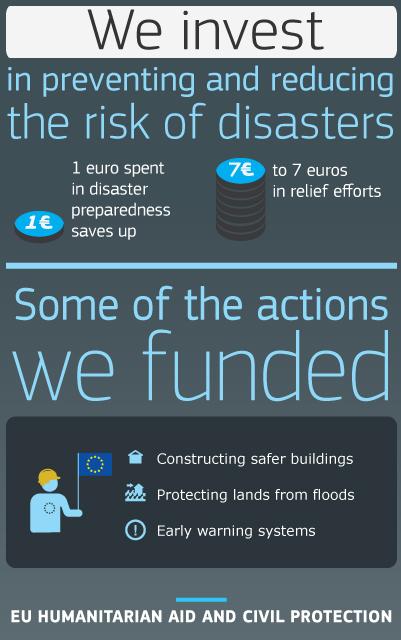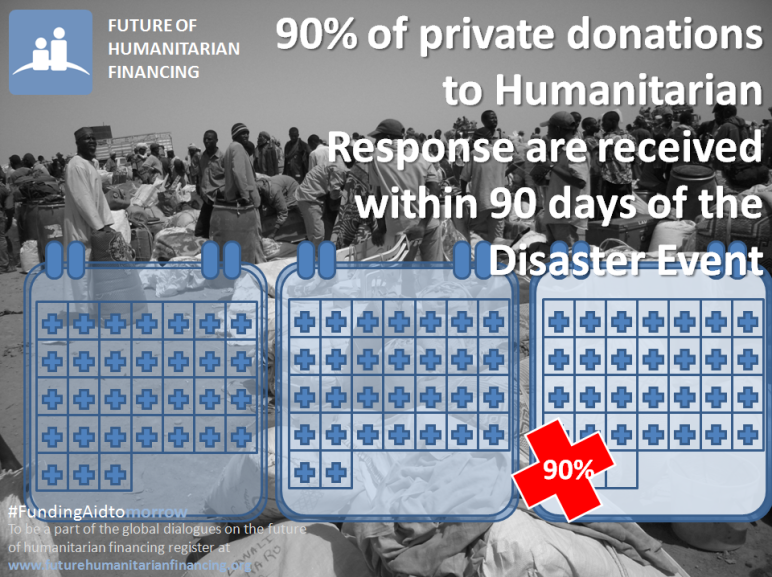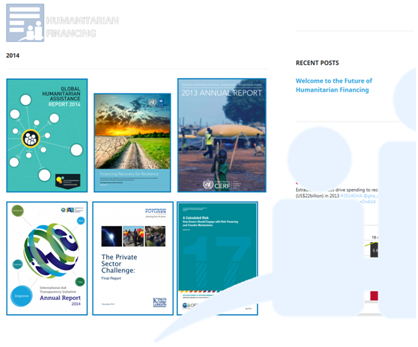Without the money, without the supplies, without the people – the situation (in West Africa) is getting worse
http://www.npr.org/v2/?i=351515481&m=351850221&t=audio
Charities raised $1.4 billion to help rebuild Haiti after the earthquake. After the tsunami in Asia in 2004, organisations raised $1.6 billion. But when something like Ebola happens, so far, people look the other way. NPR explores why it has been so difficult to raise money for Ebola and other disasters such as famine.
Until something is much more visible in the media it’s almost impossible to raise funds…you can’t raise money until people are actually starving.
Without a Galvanising moment: 90% of private donations made to humanitarian response are given in the first 90 days of a crisis. This implies that there needs to have been some event such as in Typhoon Haiyan or the Haiti Earthquake. The current Ebola outbreak in West Africa, in funding terms, in almost the complete opposite to the Haiti Earthquake. For a start (from an American perspective) West Africa is far away, but more importantly there has been no galvanising event, the spread of the disease has occurred incrementally (albeit rapidly and on a large scale). Furthermore as a medical crisis it is more difficult for people to comprehend and the pitch is not as optimistic. In Haiti, money was raised to rebuild – to make people’s lives better, in response to Ebola funding is needed to stop things getting worse. This money is not coming. Without a Galvanising moment there is a need to create one artificially:
Centre for Disease Control: If nothing is done to slow down Ebola 1.4 million people will be infected with this disease
 This figure may be a worst case and potentially unlikely scenario but grabs headlines and provides that galvanising moment that is ideal (if not necessary) to leverage high levels of public donations. Similarly declarations of Famine have this effect. However this does not provide for the most effective or efficient humanitarian response. According to the European Commission on Humanitarian Aid and Civil Protection (ECHO) every Euro spent on disaster preparedness saves 7 Euros in relief efforts. However people do not generally give to prevention and thus as a sector large-scale funding is only accessible when people are actually dying – deaths which could have been prevented had funding come earlier. Private giving from individuals, foundations and corporations is an increasingly important source of funding for humanitarian assistance. But how can these increases in private giving be leveraged to funding for disasters without a galvanising event? How can we encourage private donors to donate for preparedness and prevention of slow-onset emergencies. Future of Humanitarian Financing is an initiative which will explore new models of financing humanitarian action and address questions such as ‘how can we raise money for future crises such as Ebola’. To join in the dialogues press ‘Apply’ below and please visit our ‘About’ page for more information on the research and dialogue events.
This figure may be a worst case and potentially unlikely scenario but grabs headlines and provides that galvanising moment that is ideal (if not necessary) to leverage high levels of public donations. Similarly declarations of Famine have this effect. However this does not provide for the most effective or efficient humanitarian response. According to the European Commission on Humanitarian Aid and Civil Protection (ECHO) every Euro spent on disaster preparedness saves 7 Euros in relief efforts. However people do not generally give to prevention and thus as a sector large-scale funding is only accessible when people are actually dying – deaths which could have been prevented had funding come earlier. Private giving from individuals, foundations and corporations is an increasingly important source of funding for humanitarian assistance. But how can these increases in private giving be leveraged to funding for disasters without a galvanising event? How can we encourage private donors to donate for preparedness and prevention of slow-onset emergencies. Future of Humanitarian Financing is an initiative which will explore new models of financing humanitarian action and address questions such as ‘how can we raise money for future crises such as Ebola’. To join in the dialogues press ‘Apply’ below and please visit our ‘About’ page for more information on the research and dialogue events.


